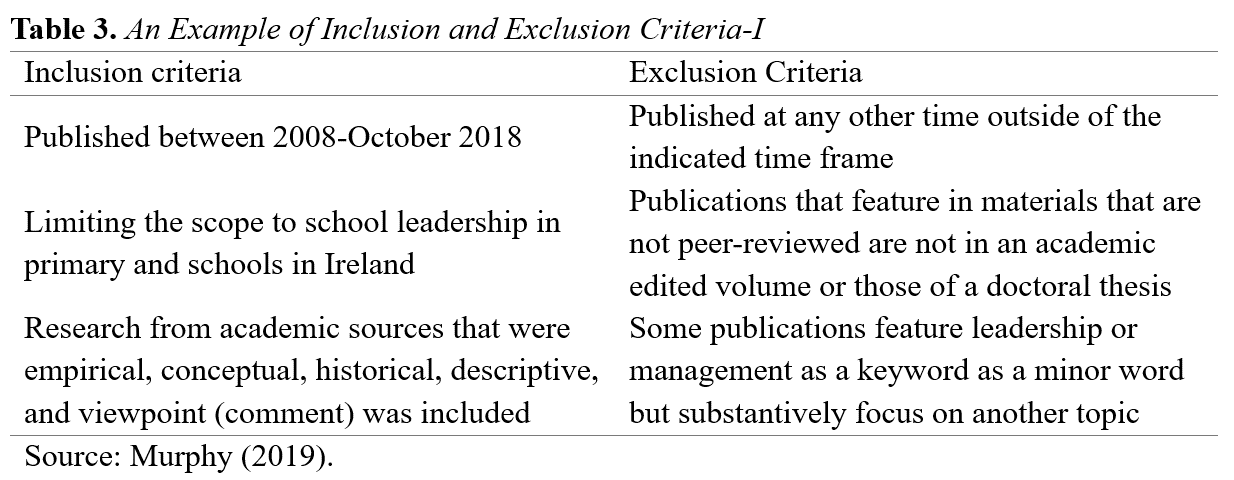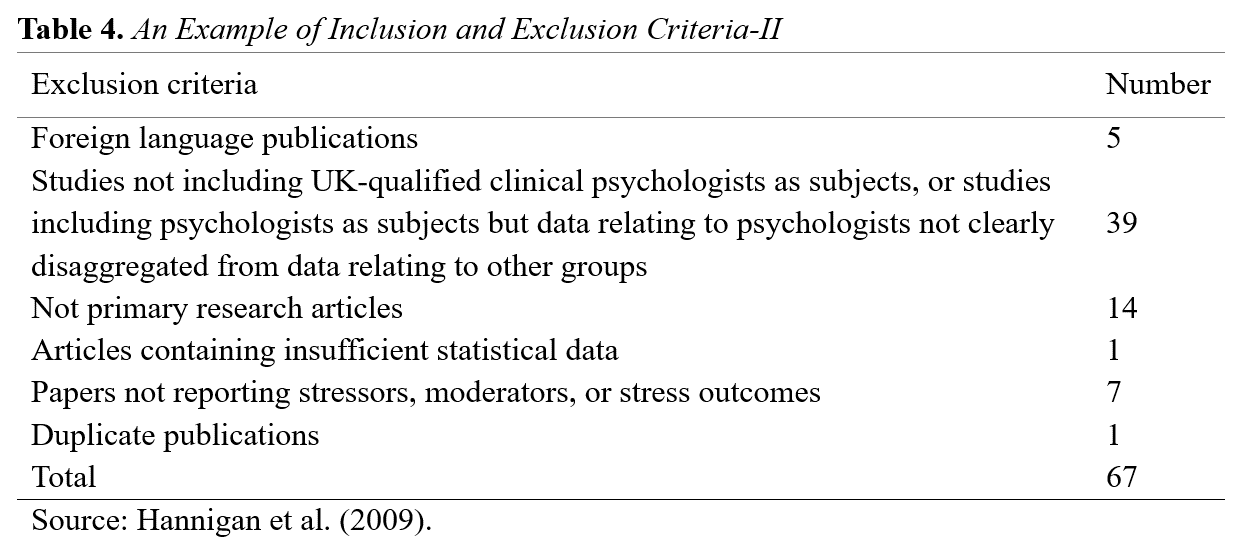Information

There are several frameworks for developing inclusion and exclusion criteria, some of which may be more appropriate depending on the type of systematic review; an example is utilizing the PICO framework mentioned earlier. However, when the research topic does not fit these frameworks, the researchers can determine the inclusion and exclusion criteria.
Researchers can limit the review to a specific type of research. In addition, other restrictions may be considered in terms of the country in which the research was conducted (e.g., only studies in Turkey), the characteristics of the participants (e.g., focusing on a specific age group), the setting of the research (e.g., within a university) and the study design itself (e.g., including only randomized control trials). The most crucial point to remember is that there should be defensible grounds for each criterion. For example, in a study restricted to one university, what distinguishes that university from others should be identified (Randles & Finnegan, 2023).
The tables below show various studies' inclusion and exclusion criteria (Hannigan et al., 2004; Murphy, 2019). It is essential to state the inclusion and exclusion criteria for all types of reviews regarding reliability and transparency. The way of reporting the criteria may vary depending on the researcher and the number of criteria. You may need to try several different search terms across multiple databases before finding a search strategy that can be replicated across your chosen databases (McGowan & Sampson, 2005).


Once a scanning strategy has been established, scanning and extraction can begin. The first screening stage usually involves the removal of duplicates, as it involves many databases. Often, the same literature can be found in more than one database. Removing duplicates can often reduce the number of papers by quite a large amount. Following this, the titles and abstracts of the remaining papers are screened (Polanin et al., 2019). At this stage, researchers review the titles and abstracts of the literature to determine whether they meet the inclusion criteria. At the end of the final screening, all remaining articles are reviewed, and a last critical review is conducted to determine whether the article should be included. At this stage, tabulating the data and recording the reasons for exclusion is often helpful to facilitate reporting.
According to the PRISMA method, which is a widely recognized and recommended approach for conducting and reporting systematic reviews and meta-analyses in various fields, including education, health, and engineering, following the predetermined protocol and marking what was done at each stage will facilitate the quality assessment of the study. Following the PRISMA method promotes transparency, reproducibility, and quality in evidence synthesis (Moher et al., 2016). The final step of the screening and selection phase is to evaluate the compliance of the studies with the protocol created according to the PRISMA model for the last time and to process the studies that are decided to be included in the protocol review.